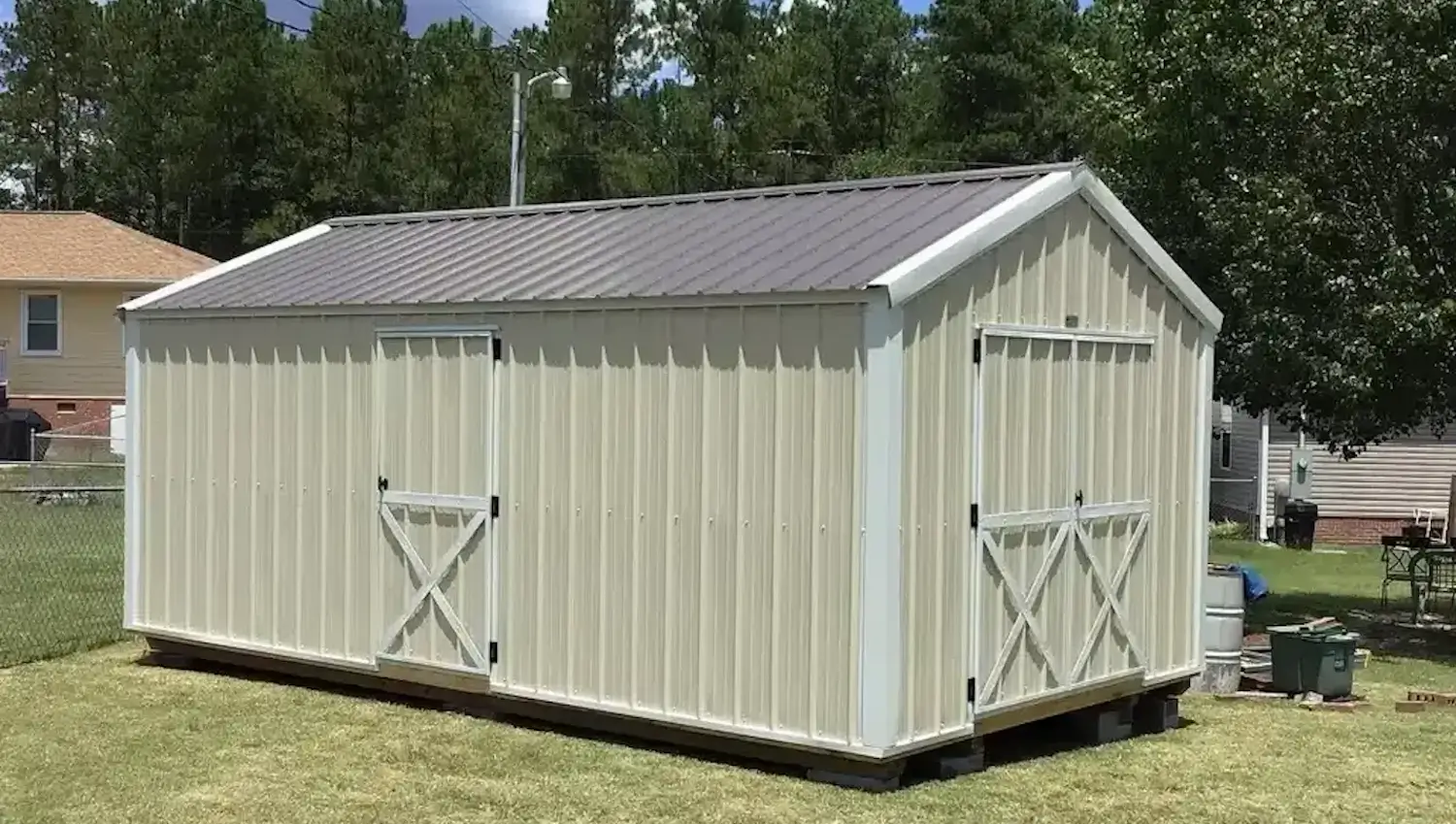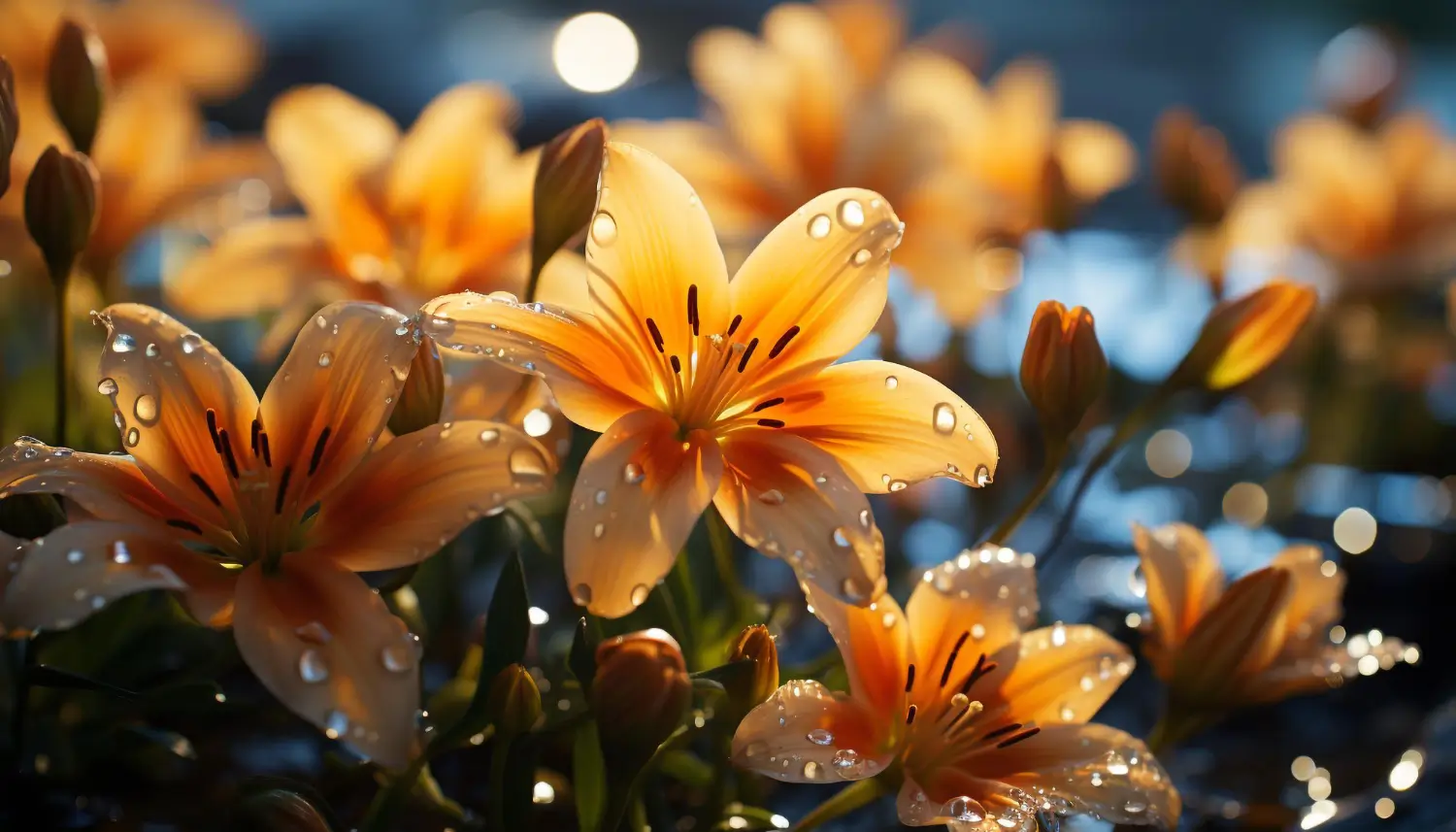
August 24, 2025

Perennial plants play a vital role in gardening, the environment, and daily life. These plants live for multiple years, returning each season without the need for replanting. Growing perennials offers many benefits, making them a great choice for gardeners and nature.
Daylilies are colorful, strong, and easy-to-grow perennials that bloom in bright shades of yellow, red, purple, and pink. They look beautiful in garden beds, along borders, or in containers, adding color and charm to any outdoor space. Daylilies can grow in many different climates and need very little care. They can survive in poor soil, resist pests, and thrive with minimal attention.
Growcycle provides agricultural products and services for growing perennial plants. For instance, Miracle-Gro's guide to growing Daylilies offers insights into planting locations, soil preparation, and care tips.
Daylilies (Hemerocallis) come from Asia, mainly China, Japan, and Korea, where people have grown them for over 2,000 years. In the past, they were not just garden flowers but also used in food and medicine. The Chinese believed that parts of the plant had healing properties, while in Japan and Korea, they were valued for their bright colors and ability to grow easily in different places.
In the 16th century, traders brought daylilies to Europe; by the 17th and 18th centuries, they had spread to North America. Settlers planted them along roads and in gardens because they required little care and produced beautiful blooms.
Originally, daylilies were mostly orange or yellow, but in the 20th century, plant breeders developed many new colors and varieties through hybridization. Today, over 80,000 types of daylilies have different shades, patterns, and flower shapes. These plants are now found in gardens all over the world because they are easy to grow and can survive in many climates.
Daylilies (Hemerocallis) are herbaceous perennials belonging to the family Asphodelaceae. Despite their name, they are not true lilies (Lilium) but share similar floral characteristics. These hardy plants are known for their striking, trumpet-shaped flowers and adaptability to various growing conditions.
Daylilies offer a variety of benefits that make them a popular choice for gardens of all sizes. Here are some of its benefits:
Daylilies provide beauty in the garden throughout the seasons. In spring, their fresh green leaves appear, creating a lush backdrop. During summer, they produce bright, colorful flowers that bloom daily, with some varieties reblooming for extended periods.
Certain evergreen varieties maintain their foliage even in fall and winter, adding structure to the landscape. Their ability to adapt to changing seasons makes them valuable additions to any garden.
One of the biggest advantages of growing daylilies is their ability to thrive with minimal care. These plants can grow in a wide range of soils, tolerate drought, and withstand extreme temperatures.
Daylilies are also resistant to most pests and diseases, reducing the need for chemical treatments. Once established, they require little attention, making them ideal for busy gardeners or those looking for a low-maintenance landscape.
Daylilies are important in supporting local ecosystems. Their nectar-rich flowers attract pollinators such as bees, butterflies, and hummingbirds, helping to promote biodiversity.
By planting a variety of daylilies, gardeners can provide a continuous food source for these beneficial insects throughout the growing season. This makes daylilies beautiful and an environmentally friendly choice for any garden.
Daylilies can improve garden design in many ways. They look stunning in borders, creating a colorful edge along pathways and flower beds. They can also be planted in large groups for a bold, eye-catching display.
In addition, daylilies grow well in containers, making them great for patios, balconies, and small spaces. Their adaptability allows gardeners to use them to create dynamic and attractive landscapes in various settings.
It is important to consider several factors to choose the right daylily variety for the garden:
Daylilies come in a wide range of vibrant colors, from sunny yellows and oranges to deep purples, pinks, and even bi-colored varieties. When choosing daylilies, consider the garden's color scheme. Bright, bold colors can create a striking focal point, while softer hues can complement other plants and provide a more peaceful ambiance. Mixing different colors can add depth and visual interest to the garden design.
Daylilies have varying bloom times. Some bloom early in the season, while others flower later or even rebloom multiple times during the summer. To enjoy continuous color, growers need to plant a mix of early, mid-season, and reblooming varieties. This will ensure the garden has daylilies blooming throughout the growing season, adding ongoing beauty to the landscape.
Daylilies come in different growth habits, from compact, smaller varieties to taller, more spreading types. Pay attention to the size and shape of the plant to ensure it fits well in the garden. Opt for compact varieties that stay relatively low and tidy for smaller spaces or borders. For larger areas or background plantings, choose larger varieties that can grow taller and form bigger clumps.
Different daylily varieties thrive in specific climates. While most daylilies are adaptable to a range of temperatures, some varieties are more suited to colder regions, while others are more heat-tolerant. If people live in a cooler area, choose daylilies that can handle frost and colder temperatures. In warmer regions, opt for varieties that are better suited to heat and dry conditions. Be sure to choose varieties that will perform well in the local climate.
Daylilies are not picky when it comes to soil and can grow in various soil types, including sandy, clay, or loamy soils. However, they prefer well-drained, moderately fertile soil. If soil is heavy or poorly draining, amend it with organic matter to improve drainage.
Daylilies can also tolerate somewhat poor soil, but they will grow better and produce more blooms in richer, well-balanced soil. Consider the soil conditions in the garden when selecting daylily varieties to ensure they grow strong and healthy.
Planting daylilies is easy and a great way to add vibrant color to any garden. Here is the step by step guide to plant daylilies in the garden:
The ideal time to plant daylilies is either in early spring or fall. Spring planting allows daylilies to establish their roots before the summer heat, giving them a strong start. On the other hand, fall planting gives the plants time to develop their root system before the cooler months arrive so they are ready to bloom the following spring. While both seasons are suitable, spring planting is generally preferred, as it allows the plants to grow and adapt during the growing season.
Choosing the right location is crucial for daylilies’ success. They need full sun for at least 6 hours a day to produce vibrant blooms. While daylilies can tolerate some partial shade, too much shade will result in fewer flowers and weaker growth. It’s also essential to select a site with well-drained soil.
Daylilies do not thrive in waterlogged conditions, so avoid low-lying areas where water tends to collect. Ensure there is enough space between plants to allow for proper air circulation, which helps prevent disease and promotes healthy growth.
Daylilies prefer loamy, slightly acidic to neutral soil (pH 6.0 to 7.0). Before planting, amend the soil by incorporating organic matter like compost or aged manure to improve soil structure and provide essential nutrients. Add sand or perlite to improve drainage if the soil is heavy or clay-based.
It is a good idea to perform a soil test to check for nutrient levels and adjust accordingly. Adding balanced fertilizers during planting will give the daylilies a nutrient boost to encourage strong growth.
Taking care of daylilies is easy and can help them thrive year after year. Follow these steps to grow daylilies and bring color and life to the garden for many seasons to come:
Once established, daylilies are relatively drought-tolerant but still need regular watering, especially during their growing season. Watering deeply in the early stages is important to encourage strong root growth. Daylilies should be watered about once a week during the warmer months, but this can vary depending on rainfall and the climate. Drip irrigation or soaker hoses are ideal for keeping the foliage dry while delivering water directly to the roots.
The best type of fertilizer for daylilies is a balanced, slow-release fertilizer with equal amounts of nitrogen (N), phosphorus (P), and potassium (K), such as a 10-10-10 mix. Apply the fertilizer in early spring as the plants begin to grow and again in late spring or early summer to encourage healthy blooming.
Avoid fertilizing too late in the season, as this can encourage soft growth that is more vulnerable to winter damage. Organic fertilizers, like compost or aged manure, can also provide steady nutrients without the risk of over-fertilizing.
Mulching is important for maintaining moisture, suppressing weeds, and regulating soil temperature. To prevent rotting, apply a 2-3 inch layer of mulch around daylilies, keeping it a few inches away from the crown. Mulch helps keep the soil consistently moist and provides nutrients as it breaks down. Landscape fabric under mulch can also help control weeds without the need for chemicals.
Here are some of the most common daylily problems and practical solutions to keep the plants healthy and flourishing.
Aphids are small insects that suck sap from the leaves, causing them to curl and yellow. Mites can also damage daylilies, leaving behind a speckled or silvered appearance on the leaves. To prevent pests, regularly inspect plants for signs of infestation and wash them off with a strong jet of water if necessary. If pests persist, use insecticidal soap or neem oil as a safe, natural treatment.
Fungal diseases like leaf spot and rust can also occur, particularly in humid conditions. To prevent disease, ensure the plants have good air circulation, avoid overhead watering, and remove any affected leaves promptly.
Daylilies are tolerant of dry conditions but do not like sitting in water. Overwatering can lead to root rot, which causes yellowing leaves and wilting. To prevent this, ensure the soil is well-drained and avoid excessive watering.
If root rot is suspected, check the soil for sogginess and improve drainage. If the roots are rotting, the plant may need to be removed, the damaged roots trimmed away, and replanted in a drier, well-drained location.
Daylilies can experience environmental stress from extreme weather conditions like intense heat, sunburn, or frost. Sunburn can cause leaves to become scorched or discolored. If daylilies are in full sun, consider providing some afternoon shade during hot weather.
Frost damage can occur in late spring or fall when temperatures drop unexpectedly. To protect daylilies from frost, cover them with a light fabric or mulch if cold weather is expected. If plants suffer from frost, cut back any damaged foliage in the spring to encourage new growth.
Daylilies are a great choice for gardeners who want vibrant, easy-to-grow, and low-maintenance plants. With their strong history and ability to attract wildlife, daylilies improve any landscape. These hardy plants can grow for many years with the right care, adding charm and strength to gardens everywhere. Explore Growcycle to enjoy these hardy perennials year after year.
Disclaimer: This material is for informational purposes only and should not be relied on for legal, medical, financial, or any other form of professional advice.
Daylilies grow best in full sun but can tolerate partial shade. However, more sun results in more blooms.
Yes, daylilies are perennials, meaning they return year after year with new growth and blooms.
A daylily is a perennial flower known for its vibrant, trumpet-shaped blooms that last only one day but are produced continuously throughout the growing season.